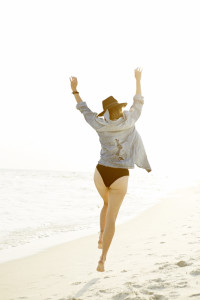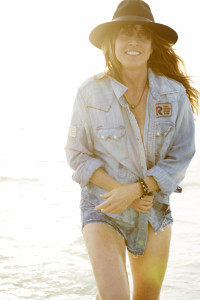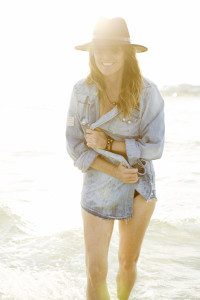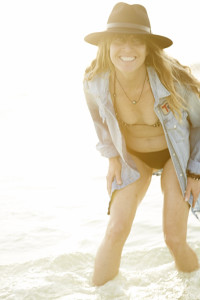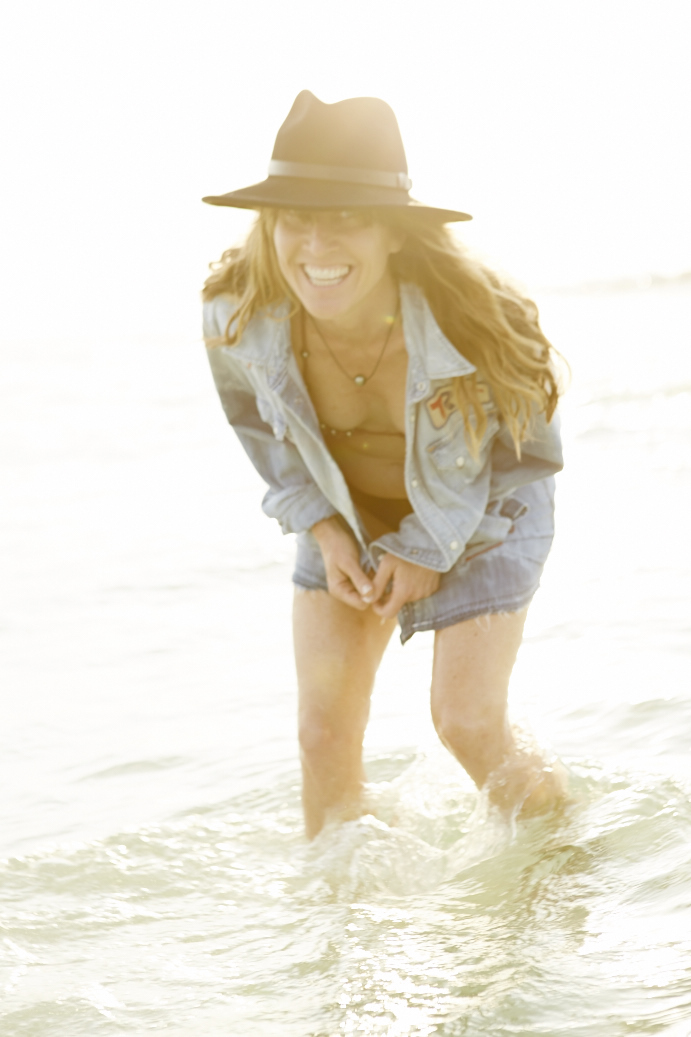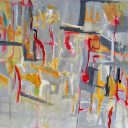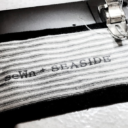“Seaside m a surpris par son accueil chaleureux sa population si acceuillante et sa formidable et paisible tranquilite. Quel plaisir de passer un’ peu de temps au sein de cett’e station balneaire un peu surreelle que je ne connaissais qu au travers d un blockbuster hollywoodien. The Truman Show. Peut etre etait ce un Disney movie – les films Disney sont bien souvent des contes de fee mais peut etre Seaside est le lieu ou le reve devient réalité.” – Antoine Verglas
It was the morning of my last day writing for Hamptons Magazine when Wendy Mignot messaged me. I was working from the magazine offices in downtown New York City, across from the One World Trade Center building that was under construction. As one of the family of friends from my hometown of Scenic Highway 30A, seeing the Mignot name flash on the screen of my phone brought a warm ray of Seaside sunlight into the concrete steel of city-life.
“Hi Anne! My belle soeur (sister-in-law), John Noel’s sister Nathalie, is coming to New York. She’s an amazing artist. Thought you would like to meet another Mignot. Let me know.”
Another Mignot?
A family with a history so rich and exotic as theirs was hardly without intrigue, and it was my turn to return its generosity. I would invite Nathalie to stay with me in SoHo. I friended her on Facebook and offered up the digital version of an introduction. I scanned through her posts. She called herself, The Pachamama (Mother Earth). “Nice to meet you!” I messaged her. “What are the dates you will be in New York City? I’d love for you to stay with me.”
Nathalie’s response came within a matter of minutes. Undeniably French, I thought with a smile as I read the text. “6:30 p.m. I be there at JFK. We look like sisters.”
The words took a moment to sink in, and I sent my question feeling a rush of panic. Surely she couldn’t mean…“6:30 p.m.? Tonight?”
Silence. I waited.
No response.
The silence stretched on and the question remained in the air.
Tonight came, but no answer came with it.
I was home when my phone rang at 6:56 p.m.
“Anna? This is Nathalia! Anna, I am cominga. What is the addressa?” The thickly French accented voice was deep and guttural, as if it was pushing up from the center of earth, echoing through strata of sedimentary rocks in Mexico.
“94 Prince Street,” I answered simply, my mind flooded with confusion and questions as her soulful vibe permeated into the porous air around me and hung there, suspended. How would I explain The Pachamama to my roommates?
“Eh, nihntee fah Princie Streeta,” I heard her say to the cab driver. Her accent draped every word, transforming them into a universal language that sounded beyond chic.
“Okaya, Anna. Good-bya.”
Nathalie’s colors filled all of my senses; and deep down, I knew that my life was about to change.
Again.
I hustled down from my loft at Prince and Mercer to wait for The Pachamama at Fanelli Café, where I knew I would be able to see her the moment she arrived.
It was strange, though, this appointed meeting of ours, so serendipitous and unexpected. Fittingly enough, I didn’t have to see Nathalie coming to know she was there—I could feel it in the wind. As I looked out the café window, the flash of colors she wore exploded into vision, a rainbow spilling from the cab that had brought her to our twilight corner of New York.
I flew out the door to greet her, this exotic woman whose mere presence made all of SoHo stop and stare. The colorful bag that she carried held a flute, and with her Australian hat in hand and wearing a beautifully woven Mexican dress, she evoked the image of one who had traveled the world relying on the music in her soul as her only guide. The cab driver stepped out of the car and opened the door for her, as if she were royalty. SoHo stood still while The Pachamama carefully pulled a long turkey feather from her bag and placed into the bun of her hair and the driver left her bags at my door.
“Nathalie?” I called, from the stoop of Fanelli’s.
“Anna!” She cried back happily, warmly, and her arms burst open like a colorful bird to embrace me.
She was magical, and now I was a part of her world.
The Pachamama spent the next week with my roommates and me in SoHo, sweeping us into a weeklong adventure that seemed a natural part of Nathalie’s personal fairytale world. On her last day in New York, she said, “Anna, I needa you to taka me to da fabrikah!” She wanted to take cloth back to Sayulita, Mexico, to make dresses—something she created quite often, along with the signature leather and pearls jewelry that she and her family began creating on their sea voyages many moons ago – as style such as theirs could hardly be copied or bought off the rack.
Fortunately enough, I knew just the person who could supply her need; and so we set off for the Upper East Side, to find my friend Tucker Robbins, who owns a furniture design and art studio. Naturally enough, Nathalie and Tucker hit it off.
Nathalie’s reputation as part of the famous Mignot tribe had preceded her, winding its way through the annals of the art world like errant rivers of paint; and with so many connections all over the globe, Tucker had heard the storied name quite often. Her parents had claimed the shores of St. Barths, knotting them up in the magical bracelets and necklaces they created with leather and pearls; and for almost two decades those Mignot pearl treasures were washing over the beaches at Seaside, where Nathalie’s brother Jean Noel and his wife, Wendy, owned a shop and raised their family. That was where I had met Wendy, where we had formed our own connection; and, almost unbelievably, how I was now connected to this colorful woman who had claimed the world as her oyster.
Much like the rest of Nathalie’s time with me, the next few hours seemed a fantastical aligning of stars.
“Nathalie, do you know Christiane Celle?” Tucker asked casually. “She owns a boutique called Clic Gallery near your parents’ store in St. Barths.”
“Yesah Tuckar! My mama and papa knowsa Christiane,” Nathalie replied, not sounding too surprised at his knowledge of the woman a world away. “I nevah metta har.”
Tucker smiled. “Well, then! You are meeting her today! Let’s go.”
Tucker hailed a cab and before I knew it, we were sailing through Manhattan on our way to Nolita. We spent the next hours together, a newly-banded group of adventurous wanderers, fast friends after Tucker introduced all of us at the gallery in Nolita that Christiane and her husband Antoine Verglas owned – Clic. The beautiful woman with a thick French accent was quick to welcome us, a quiet creative force who seemed to spill magic in whatever space she occupied. As the afternoon wore on, we left Christiane’s gallery, hungry for food and drink and reverie—and so our group descended onto the rooftop of my apartment, where take-out pizza and wine fueled the tales of family adventures and legacies on the high seas.
Such a night could have led to nothing, swept aside into distant memory or discarded like an empty take-out container, but after The Pachamama left for Mexico the next day of my life resumed its normal pattern and Christiane and I continued the friendship we had formed over mutual friends, pizza and wine; and on one casual day we spent whiling away time over lunch, she looked at me thoughtfully and said matter-of-factly, “You know, Antoine should shoot you one day.”
I didn’t know it then, but the Antoine of whom she spoke was no mere cameraman.
He was Antoine Verglas, whose name shared pages of the same publications as Annie Lebowitz and Patrick Demarchelier.
Shoot me? No.
I smiled. Maybe one day.
When publisher Miles Neiman invited me to write an art column for 30A Review, I thought it would be a great way to advance the international art initiatives of the towns for which I am so impassioned. I submitted my first column and Miles emailed back with a question. Would I be on the cover of the July/August issue of 30A Review, representing a vintage Seaside? It was a long shot, but I messaged Antoine and Christiane and in the snap of the shutter speed of his camera, his first trip to Seaside was set into motion.
Everyone had their idea of a vintage Seaside set for the shoot, but as we hastily prepared for our project, I felt myself almost incapable of suggesting to Antoine the direction we should take. Afterall, he was Antoine Verglas, the famous French photographer whose camera has captured nearly every celebrity and supermodel in the world. So long has his career been taking him to destinations all across the world that one can only wonder what his eyes have not seen; but as he unfolds that atlas to explore the emotions that wash along the avenues of Seaside, I wondered what he would find. I was merely the muse; and so I followed his lead, knowing he would find the perfect spot, the perfect light, the perfect energy. I toured him through Rosemary Beach, Alys Beach, through some of the natural parks and preserves, and finally through Seaside. When we finished, I asked him where he would like to shoot.
His reply came without hesitation. “Les dunes.”
We drove my Jeep to Grayton Beach to walk the trail along the dunes, Antoine’s eyes scanning the horizon. I was barefoot and wearing a black hat that I had bought from a street vendor in SoHo, armed with nothing else but a swimsuit and vintage collection of clothes from Ophelia Swimwear and the leather and pearls that have come to feel like my second skin.
Dressed as I was, I was hardly out of place, here on a beach that was now exploding in celebration of the last day of school and the first day of summer. Local musicians had set up camp to vibe out the sounds of the community spirit next to a canopied sign that read, “Today Is the Perfect Day To Start Living Your Dreams and signed, Live Your Love – The Mignot’s.” The free-from-school kids played volleyball and soccer on the white coastal sand, while a feast provided by the Mignot family and Seaside art teacher, Billie Gaffrey, kept everyone full. The moment came together to create the perfect backdrop for the task at hand. Far beyond the imaginings of the great producers, this photoshoot set could not be contrived – it was the real deal. Even so, when the sun reached just the right position in the sky and Antoine said it was time for the shoot, I found no sense of ease. I was nervous. The camera would show that, I knew.
Antoine knew it, too.
He was too skilled not to sense it; and so he took me away from the dunes and my friends who had come along with us and told me to walk out into the Gulf, where the water washed away my inhibitions and swept the light back into my eyes. It was then that I saw Grayton Beach in a new light. The camera clicked. This was vintage Seaside.
As we walked toward the setting sun back to our family of friends, I thought about the Truman Show and remembered that fateful day when Jim Carey, as Truman Burbank, awakened to discover that his idyllic life in Seahaven had been a masterminded movie-set. I pondered. If there was ever to be a sequel, and Truman returned after his escape, I know what he would find – that it was no set at all.
“Seaside surprised me by the warm-hearted cordiality of its people, so welcoming… and its formidable and peaceful tranquility. What a pleasure to spend some time in the midst of this seaside town–seeming a little surreal since I first became familiar with the scenes through the Hollywood blockbuster movie “The Truman Show,” which was like a Disney movie. Disney films often are fairy tales, but perhaps Seaside is the place where the dream becomes reality.” – Antoine Verglas




